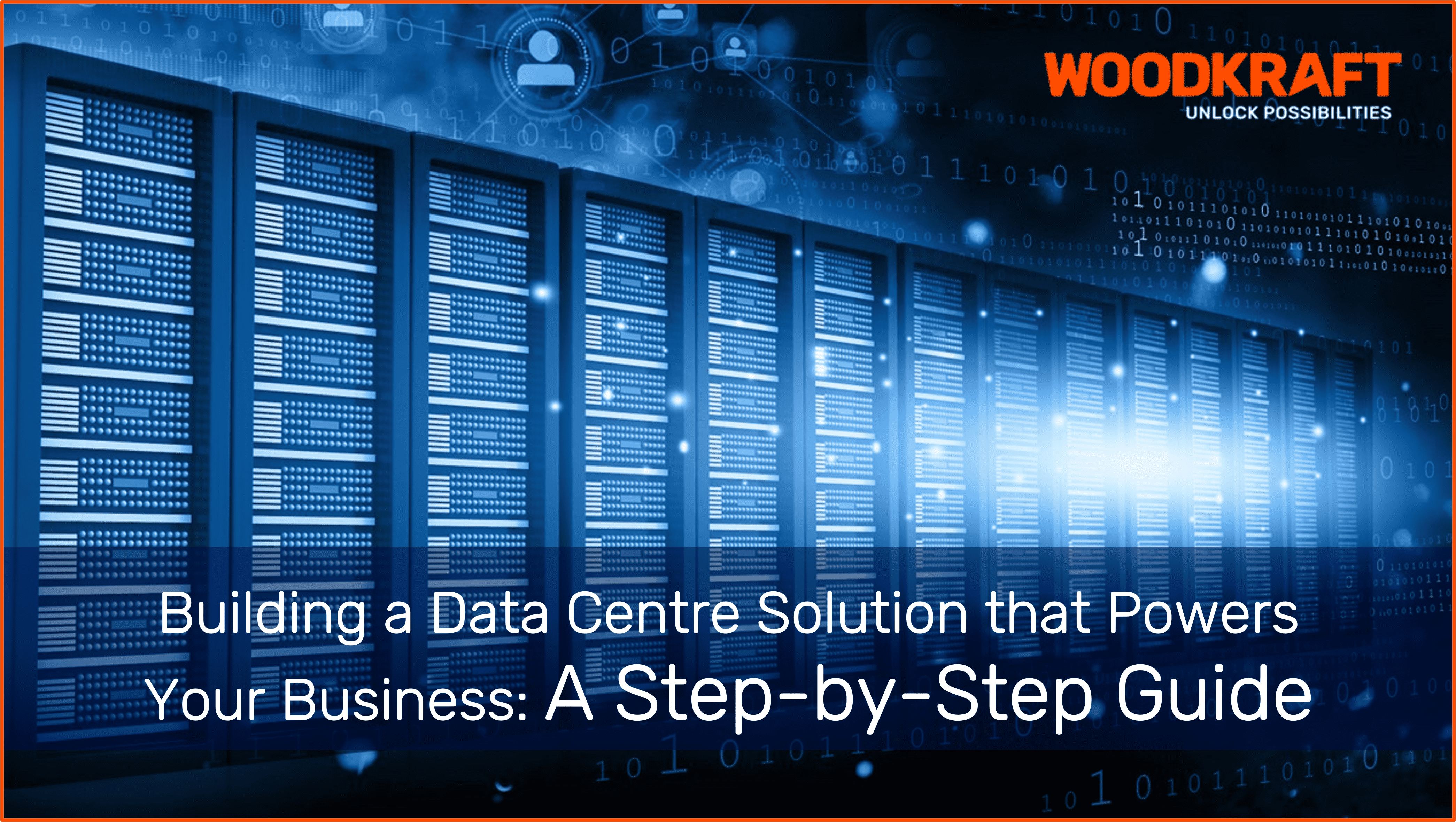DATA CENTRE
Building a Data Centre Solution that Powers Your Business: A Step-by-Step Guide
June, 2023
Data centre solutions are the combination of IT infrastructure, services, and management tools that enable you to store, process, and deliver your data and applications. Data centre solutions can help you improve your productivity, efficiency, security, and innovation. However, creating data centre solutions that meet your business goals and expectations can be a complex and challenging task that requires careful planning, research, and execution.
Here are some steps that can help you create data centre solutions that meet your business goals and expectations:
Define your objectives: The first step is to define what you want to achieve with your data centre solutions. What are your business goals and requirements? What are your performance, availability, scalability, security, and compliance expectations? How do you measure your success and return on investment? By defining your objectives clearly, you can align your data centre solutions with your business strategy and priorities.
Assess your current situation: The next step is to assess your current IT environment and data centre facilities. What are the strengths and weaknesses of your existing data centre solutions? What are the gaps and challenges that you need to address? How do you compare with your competitors and industry standards? By assessing your current situation objectively, you can identify the areas that need improvement and optimization.
Explore your options: The third step is to explore the different types of data centre solutions that are available in the market. There are different types of data centres that you can choose from depending on your needs and preferences. Some of the common types are:
- Enterprise (on-premises) data centres: These are data centres that are owned and operated by businesses themselves for their own internal computing data storage needs. These data centres provide more control over information security and compliance with regulations but require more resources and expertise to deploy and manage.
- Public cloud data centres: These are data centres that are owned and operated by cloud service providers such as Amazon Web Services (AWS), Google Cloud Platform (GCP), IBM Cloud (IBM), Microsoft Azure (MSFT), or Oracle Cloud Infrastructure (ORCL). These data centres provide shared IT infrastructure resources for multiple customers via an Internet connection. These data centres offer more scalability, flexibility, cost-efficiency, accessibility, and innovation but less control over information security and compliance.
- Managed services data centres: These are data centres that are deployed, administered, and monitored by a third-party service provider. The business leases servers, storage, and networking hardware from the provider while the provider oversees the administration, monitoring, and management. These data centres offer a balance between control and convenience but may have higher costs than public cloud data centres.
- Colocation facilities: These are data centres that provide dedicated space for businesses to host their own IT infrastructure within the facility. The business owns all the infrastructure but leases the space, power, cooling, and connectivity from the facility. These data centres offer more customization and control but require more resources and expertise to deploy and manage.
You may also opt for a hybrid or multi-cloud approach that combines different types of data centres to optimize your IT environment.
Compare and select: The fourth step is to compare and select the best data centre solution for your business. You should consider various factors such as your business goals, requirements, budget, and preferences. You should also consider the services offered, pricing model, security and compliance measures, performance and reliability levels, support and service level agreement (SLA) terms, reputation and reviews of different data centre providers or services. You should also conduct a proof of concept (POC) or a pilot project to test the feasibility and suitability of the selected data centre solution before making a final decision.
Implement and optimize: The final step is to implement and optimize your data centre solution. You should follow the best practices and standards for data centre design, construction, and operation. You should also monitor and measure your data centre performance, security, and efficiency using various tools and metrics. You should also continuously evaluate and improve your data centre solution based on your changing business needs and expectations.
Creating data centre solutions that meet your business goals and expectations can help you improve your productivity, efficiency, security, and innovation. However, creating data centre solutions requires careful planning, research, and execution. By following the steps mentioned above, you can create data centre solutions that suit your needs and budget.
Stay tuned for the next article in this series to learn how to leverage the power of data centre solutions for business success. Our experts will share valuable insights and practical tips to help you gain a competitive edge in the digital economy.
Previous Article in the Data Centre Knowledge Series:
Next Article in the Data Centre Knowledge Series:
Unlocking Business Success: The Power of Leveraging Data Centre Solutions
Follow Woodkraft on LinkedIn for the latest updates and inspiring workspace solutions.
Click: Woodkraft (India) Private Limited | LinkedIn
Visit out Blogs






